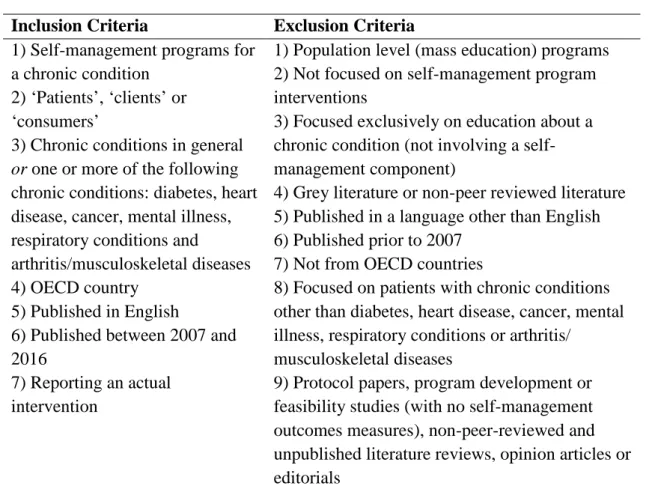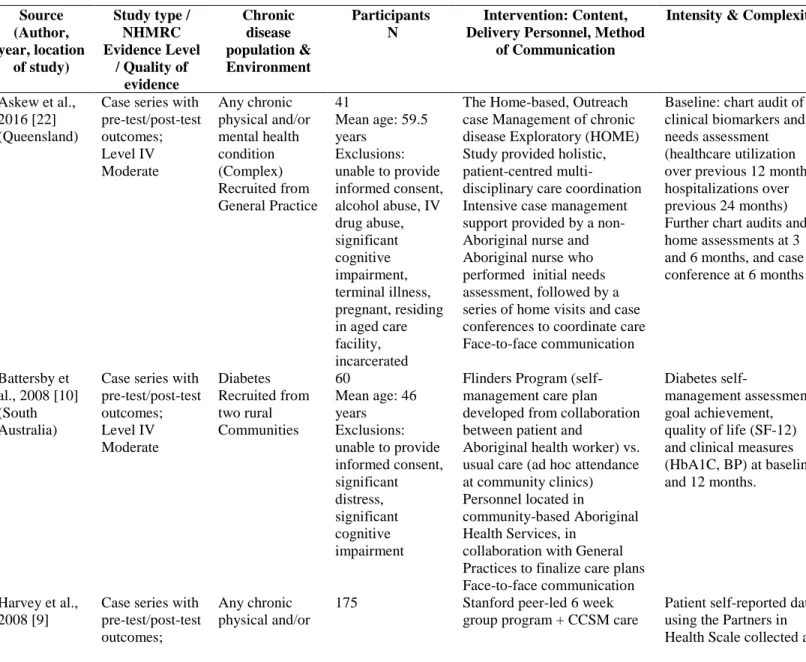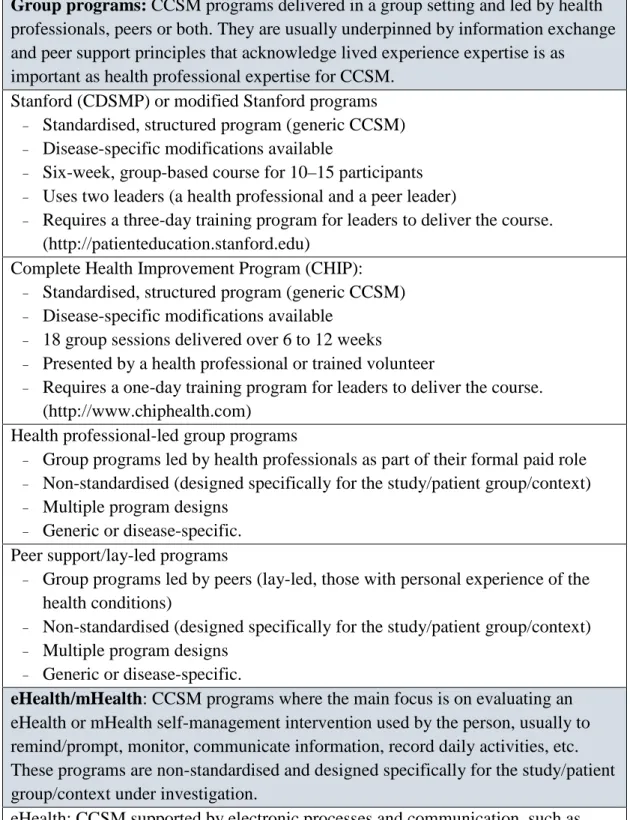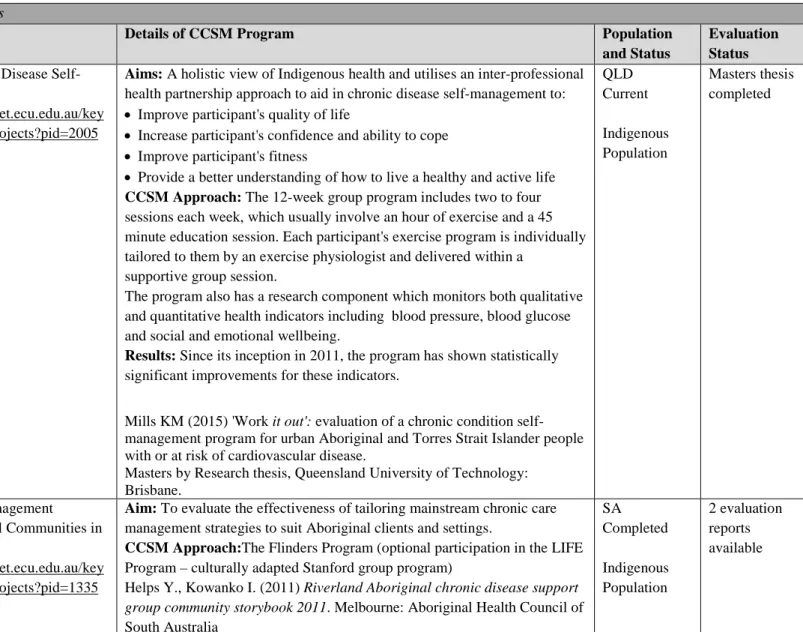Objectives: To review the evidence for the effectiveness of self-management programs for chronic conditions applied to Aboriginal and Torres Strait Islander peoples. Numerous gray literature resources were identified, many of which utilized strong participatory approaches developed locally within Aboriginal and Torres Strait Islander peoples. Keywords: Aboriginal and Torres Strait Islander peoples, chronic conditions, self-management programs, Closing the Gap, rapid assessment.
Unfortunately, few of these conditions are met in many Aboriginal and Torres Strait Islander communities [8]. The aim of this review was to summarize the evidence for the effectiveness of chronic condition self-management (CCSM) programs applied to Aboriginal and Torres Strait Islander Peoples. Aboriginal and Torres Strait Islander Peoples were one of four sub-population foci for this review (others were low socio-economic status, culturally and linguistically diverse, refugee populations), commissioned by an Australian Primary Health Network, COORDINARE [14].
Which chronic conditions self-management programs have been evaluated for their effectiveness among Aboriginal and Torres Strait Islander people with chronic conditions. Work it Out' program for urban Aboriginal and Torres Strait Islander Peoples involved a health professional led group program with 28 participants. Aboriginal and Torres Strait Islander People [9,10] , and one study focused on both rural and urban Aboriginal and Torres Strait Islander People with a range of chronic conditions [19] ;
Participants included a small sample of Aboriginal and Torres Strait Islander clients (n=36) across three communities in South Australia, including the Port Lincoln Aboriginal and Torres Strait Islander Health Service, the Riverland community and Nunkuwarrin Yunti Aboriginal and Torres Strait Islander Health Service in the Adelaide metropolitan area [19].
Table 4]
Many CCSM programs described in the gray literature used a combination of different CCSM approaches (for example: combination of individual and group components; offering CCSM care planning and peer support). This was arguably done to increase engagement with the programs and to expand the range of opportunities for program users in 'real world' community and clinical settings. Few locally developed programs had been subject to rigorous evaluation; most program evaluations were either absent/unavailable in the public domain or used more superficial qualitative methods of participant satisfaction with the program.
Exceptions were Aunty Jean's Good Health Team Program in New South Wales (NSW) [28] and The Australian Integrated Mental Health Initiative [29] in the Northern Territory. The aim of the program was to develop a combined model of health promotion, education and self-management that could support and sustain the development of good health behaviors and strategies for Aboriginal and Torres Strait Islander people with chronic and complex care needs. The program was piloted in the Illawarra and Shoalhaven Aboriginal and Torres Strait Islander communities in NSW.
The Australian Integrated Mental Health Initiative (AIMHi), which adapted its Stay Strong programs and the Flinders Program – My Health Story, aimed to provide relapse prevention support for Aboriginal and Torres Strait Islander peoples with serious mental illness [ 29]. Finally, the gray literature review identified a collection of national 'Closing the Gap' Clearinghouse resources from the Australian Institute of Health and Welfare (AIHW) that provided detailed information and evidence on what works and what doesn't work in implementing CCSM programs for Aboriginal people and Torres Strait Islander. Peoples [30].
Discussion
From the gray literature, Aunty Jean's Good Health Team Program [28] appeared to provide a comprehensive report, a good evaluation design, and positive outcomes. However, many grassroots programs identified in the gray literature were not evaluated using sensible measures; most relied on weaker evidence based on patients' perceptions of and satisfaction with the program. Many of these initiatives did not produce evaluation reports of sufficient quality to determine the value of the programs they delivered.
The gray literature also identified useful guidance outlined by the AIHW Closing the Gap resources with best practice principles for overcoming Aboriginal and Torres Strait Islander disadvantage for CCSM programs proposed for Aboriginal and Torres Strait Islander peoples with chronic conditions [30]. 13] who advocate ethical standards for conducting research with Aboriginal and Torres Strait Islander peoples that take into account ways of constructing knowledge that value community partnership and similar principles. Furthermore, these guidelines are likely to be relevant to CCSM programs proposed for other populations facing marginalization, discrimination, or exclusion [14] due to the strong emphasis on end-user consultation and participation in identifying CCSM needs.
Short-term, one-off funding, piecemeal interventions, service delivery in isolation and failure to develop Aboriginal and Torres Strait Islander people. The results of this rapid review are limited to the Australian context, although several of the issues discussed have been shown to be relevant to the experiences of Indigenous populations elsewhere [31–33].
Conclusion
- World Health Organisation. Global status report on noncommunicable diseases 201
- Council of Australian Governments. Closing the Gap in Indigenous Disadvantage
- Council of Australian Government Reform Council. Healthcare in Australia 2012-13
- UK National Heart, Lung and Blood Institute (NHLBI) Quality Assessment Tool for Before-After (Pre-Post) Studies With No Control Group
- CASP UK. Critical Appraisal Skills Programme (CASP): Making sense of evidence
- Flinders Human Behaviour and Health Research Unit. Flinders Closing the Gap Program
- Self-management programs for a chronic condition
- Chronic conditions in general or one or more of the following
- Published in English
- Published between 2007 and 2016
- Reporting an actual intervention
- Population level (mass education) programs 2) Not focused on self-management program
- Focused exclusively on education about a chronic condition (not involving a self-
- Grey literature or non-peer reviewed literature 5) Published in a language other than English
- Not from OECD countries
- Focused on patients with chronic conditions other than diabetes, heart disease, cancer, mental
- Protocol papers, program development or feasibility studies (with no self-management
Self-management support and training for patients with chronic and complex conditions improves health-related behaviors and health outcomes. Implementing the flinder model of self-management support with aboriginal people who have the flinder model of self-management support with aboriginal people who have. Systematic review to inform prevention and management of chronic disease for Indigenous people review to inform prevention and management of chronic disease for Indigenous Australians: overview and priorities.
Perceptions of urban Aboriginal and Torres Strait Islander people in a chronic disease self-management and Aboriginal and Torres Strait Islander people in a chronic disease self-management and rehabilitation program. Investigating the feasibility, acceptability and appropriateness of outreach case management in an urban Aboriginal and Torres Strait Islander primary health service: a mixed methods exploratory study. Melbourne: Australian Institute of Family Studies. http://www.aihw.gov.au/uploadedFiles/ClosingTheGap/Content/Publications/2011/what_.
The chronic disease crisis among Aboriginal Peoples: a challenge for public health, population health and social policy. Research, University of Victoria, British Columbia, Canada, 2009. http://cahr.uvic.ca/nearbc/documents/2009/CAHR-B2-Chronic-Disease.pdf 32. Tjepkema M, Wilkins R, Senécal S, Guimond E and Penney C. Pulver LJ, Haswell MR, Ring I, Waldon J, Clark W, Whetung V, Kinnon D, Graham C, Chino M, LaValley J and Sadana R. Indigenous Health – Australia, Canada, Aotearoa Chino M, LaValley J and Sadana R. Indigenous Health – Australia, Canada, Aotearoa New Zealand and the United States – Claiming a future that embraces health for us all. Group Programs: CCSM programs delivered in a group setting and led by health professionals, peers, or both.
Requires a one-day training program for managers to deliver the course. http://www.chiphealth.com) Health professional led group programs. Peer-led group programs (lay-led, those with personal experience of the health conditions).

They are usually underpinned by information exchange and peer support principles that recognize that expertise is as important as health professional expertise to the CCSM.
Individual programs: CCSM interventions delivered to an individual rather than provided in a group setting, and designed to enhance patients’ motivation for
Work It Out Program, a chronic disease rehabilitation and self-management group program (45 minute education session = 1 hour customized exercise program and healthy snack) over 24 sessions. This exploratory study found that clients and staff involved in the Work It Out program perceived it to be an effective self-management and rehabilitation program for urban Aboriginal and Torres Strait Islander Australians. Mills KM (2015) 'Work it out': evaluation of a chronic condition self-management program for urban Aboriginal and Torres Strait Islander people with or at risk of cardiovascular disease.
Sharing solutions: Indigenous communities tackling chronic disease http://www.healthinfonet.ecu.edu.au/key -resources/promotion-. It also examines community-based plans that have been successful in reducing Indigenous health disadvantage. The program discusses projects that are making a difference: The Family Wellbeing Program at Yarrabah in Queensland; a diabetes self-management program developed by the Far North Queensland Rural Division of General Practice and currently managed by Apunipima Cape York Health Board; and the Chronic Care Program developed by Dharah Gibinj Aboriginal Medical Service in Casino, NSW. The Aboriginal Chronic Care Program (ACCP): Murr-roo-ma Dhun-Barn http://www.healthinfonet.ecu.edu.au/key -resources/programs-projects?pid=1006.
Report: http://www.ahmrc.org.au/media/resources/public-health/chronic-disease-program/299-10-out-of-10-deadly-health-stories/file.html. www.healthinfonet.ecu.edu.au/uploads/r esources/548_548.pdf. 7 produced for Closing the Gap Clearinghouse December 2013 www.aihw.gov.au/uploadedFiles/Closing TheGap/Content/Publications/2013/ctgc-ip07.pdf. Adaptations of effective mainstream programs - Triple P-Positive Parenting Program, Resourceful Adolescent Program and MindMatters What doesn't work:.


